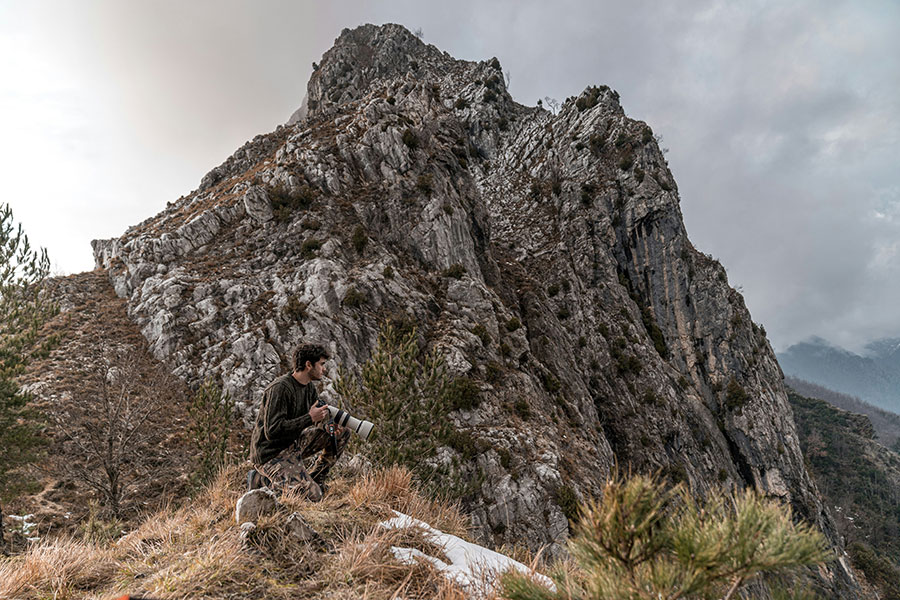
Duck Photography Guide: 5 Tips for Stunning Images
Duck photography has soared as an engaging pursuit for shutterbugs. It lures us to local ponds, lakes, and marshes where mallards and other species gather to showcase their magical prowess and sheer beauty.
Ducks are dynamic subjects. Their swift, erratic flight and affinity for wetlands present a delightful challenge. Securing that exceptional shot amidst these conditions is a testament to skill and patience.
These duck photography tips reveal seven key insights to refine your wildlife photography techniques, ensuring each venture yields more than images. We strive to provide stories that magnify the allure of our feathered friends in their natural habitats.

1. Research Duck Habitats
To excel in duck photography, insightful knowledge of various duck species and their seasonal routines is indispensable. Migratory patterns dictate when a range of species will likely be present, allowing for optimal planning of photography sessions.
Habitats such as wetlands, bottomland hardwood forests, national parks, and wildlife refuges are the canvasses for these avian subjects and are found in field guides or online. Research provides valuable intel for photographers, as ducks exhibit compelling behaviors. Activities such as preening, foraging underwater, and taking to the skies significantly enhance the ability to capture compelling images with bird photography equipment.
Engaging with local birding communities and leveraging migration data can reveal critical stopover sites and hotspots for diverse and ethical wildlife photography. By routinely visiting these habitats, enthusiasts can build a repertoire of location-specific knowledge, substantially boosting the likelihood of seizing stunning images in natural and intriguing scenarios.
2. Gather Gear for Duck Photography
A well-assembled toolkit is fundamental for those getting started in duck photography. It ensures both readiness and adaptability to capture beautiful images quickly without mishaps. The proper gear will allow you to focus on clarity and precision when monitoring waterfowl movements.
For the perfect duck photo shoot, opt for a DSLR or mirrorless camera that offers fast autofocus and burst mode to snap those quick, unmissable moments. Be sure to stock up on high-speed memory cards and bring extra batteries for longer adventures. Binoculars are indispensable for scouting and observing duck behavior before positioning your camera.

Cameras and Lenses
Sharp, crystal-clear images require a high-resolution camera with a swift autofocus mode. A telephoto lens, with a reach of 200mm to 600mm, allows for intimate portraits from a respectful distance, preserving the natural behavior of ducks without intrusion. Remember, waterfowl are skittish, so we want to minimize movement to get the best shot.
Stabilizing Equipment
The uneven terrain of natural habitats calls for inventive stabilization solutions. Ground pods excel in such environments, offering steady support without the limitations of traditional tripod legs. When a ground-level perspective is necessary, even a simple frying pan can be an impromptu stabilizer for that perfect shot.
Weather-Resistant Gear
Preparation for variable weather conditions is non-negotiable in bird photography equipment. To safeguard against the elements, utilize weather-sealed cameras, lenses, or protective covers. We recommend dry bags to transport and protect gear. They are mandatory when scouting unfamiliar marshes. Post-adventure, clean and dry equipment meticulously to maintain optimal function for future expeditions.

3. Determine Optimal Shooting Time
In duck photography, harnessing the subtleties of light can transform a simple image into a masterpiece. The serene beauty of dawn and dusk unlocks prime moments for capturing dynamic duck interactions and mastering wildlife photography techniques.
Cloudy days soften the light, creating an ideal setting to highlight the natural colors without harsh shadows. Be patient, as enduring observation often leads to capturing those fleeting, perfect scenes that define success. Recognize the power of the following tips to capture mesmerizing photos:
The “Golden” Hour
The ’golden hour’ casts a spell on the natural world, one that photographers eagerly seek. This soft, warm lighting occurs just after sunrise or just before sunset, enveloping ducks in a glow that accentuates their features and the surrounding landscape.
Wind Speeds & Effects
Low wind conditions are prime for capturing serene reflections of ducks against still waters and vibrant foliage. Conversely, high winds may cause wariness in these creatures.
Optimal shooting aligns with mornings of easterly winds and afternoons with westerly ones, allowing photographers to shoot with the sun at their backs as ducks engage in their habitual flight patterns.
Optimal Light for Colorful Photos
Capitalizing on direct sunlight during the early and late hours of the day helps to reveal the vibrant plumage of male ducks. This wildlife photography technique enhances the blues of the sky reflected in the water, adding depth and vibrancy with optimal lighting.
4. Camouflage Yourself and Blend In
Achieving the perfect shot in duck photography hinges on your ability to disappear into the environment. Camouflage is not merely an accessory. It keeps you undetectable from the superior eyesight of waterfowl. Blending in is a strategy for capturing enticing images without altering their natural behavior.
Nature’s subtle palette is one of the best duck photography tips for clothing. Earthy green, brown, and grey hues help photographers merge with the wetland environment. Be slow and deliberate with your movements to capture candid moments and ditch the cologne. Your scent, or lack thereof, can further enhance your ability to observe without alerting curious waterfowl.

Utilize Blinds
Blinds serve as your cloak of invisibility in the wilderness. Whether opting for a makeshift hide behind foliage or a portable, camouflaged setup, the goal remains constant: a clear line of sight for you and none for the ducks.
Wear Waterproof Clothing
Donning waterproof clothing or chest waders enhances versatility, allowing photographers to immerse themselves in the scene. Imagine squatting in the shallows, concealed by reeds, as you wait for the defining splash of a landing duck.
Keep Conversation To a Minimum
Silence is more than golden. Limit noise and refrain from conversation. Jokes and chatter might please human companions, but to ducks, they signal danger. Stillness and patience are your greatest allies. An unexpected rustle could mean the difference between a day’s worth of shots and a flock taking flight.

5. Find the Perfect Angle & Adjust Camera Settings
Mastering the art of duck photography requires both an eye for composition and a command of camera mechanics. The development of these skills transforms standard snapshots into striking wildlife tales.
Great duck photoshoots require strategic use of aperture and ISO settings. A wide aperture, such as f/5.6, crafts a beautiful shallow depth of field, making the subject pop against a blurred backdrop. Keep ISO at the lowest setting feasible to limit noise, while burst mode helps snap multiple moments quickly, maximizing the opportunity for stunning shots.
Seasoned enthusiasts and novices will find the following wildlife photography techniques extremely useful.
Experiment With Different Angles
Adjust your vantage point to create dynamic photos. Get low and close to capture captivating close-up shots, and be patient to capture exciting moments. Silence will reward you with moments of grace, such as a duck’s serene reflection on the water. Timeless shots like this resonate with viewers and inspire them to explore nature.
Determine Shutter Speed
Camera settings demand attention when capturing the intricate details of ducks. Employ continuous autofocus and burst mode to track their unpredictable movements, snapping multiple frames per second. Understand that aperture affects depth; use f/8 to f/16 for clarity without distortion. Regarding motion, a rapid shutter speed is essential to crystallize split-second flutters and splashes.
Apply The Rule of Thirds
The rule of thirds is one of the duck photography tips you should implement immediately. Imagine your viewfinder divided into nine equal segments by two vertical and two horizontal lines. Position your feathered subjects at the intersections or along the lines, ideally facing toward the frame’s center to draw viewers into the scene, creating balanced and engaging images.
Use Negative Space to Your Advantage
Appreciate the role of negative space; it’s not mere emptiness but a canvas that emphasizes the subject. It allows you to include vibrant colors, perches, or narrative elements indicating the duck’s environment. Skillful framing and negative space invite onlookers to a broader visual story, extending beyond the central figure.
Use Our GPS Tracker To Plan Your Next Duck Photoshoot
Becoming an expert in duck photography requires research, choosing the right equipment, understanding the peak times for shooting, camouflaging, and learning your camera’s settings.
Apply these tips in natural habitats to capture breathtaking scenes. For real-time migration movements, use the 50 Ducks platform. Our waterfowl migration map informs photographers about current duck locations, ensuring you are at the right place for the perfect shot.
Pooling knowledge with local birdwatchers can unlock fresh insights for your next shoot, unleashing the full potential of bird photography equipment. Set focused photo goals, whether ducks are soaring, resting, or foraging. With a well-developed skill set, you can capture diverse species and enrich your portfolio. Sign up for live duck tracking today!

